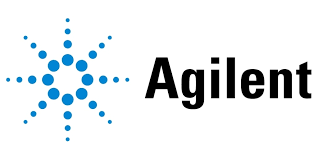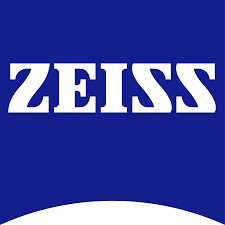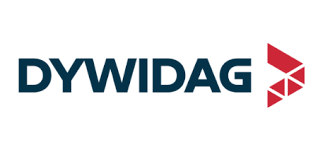Neurotherapeutics Market Report
Published Date: March 16, 2024 | Report Code: neurotherapeutics
Neurotherapeutics Market Size, Share, Industry Trends and Forecast to 2033
This market report delves into the Neurotherapeutics industry, examining its growth trajectory from 2023 to 2033. It provides insights into market size, segmentation, regional analysis, and trends, supporting stakeholders in making informed decisions.
| Metric | Value |
|---|---|
| Study Period | 2023 - 2033 |
| 2023 Market Size | $20.50 Billion |
| CAGR (2023-2033) | 6.8% |
| 2033 Market Size | $40.29 Billion |
| Top Companies | Johnson & Johnson, Pfizer Inc., Roche, Novartis, AstraZeneca |
| Last Modified Date | 02 June 2025 |
Neurotherapeutics Market Report (2023 - 2033)
Neurotherapeutics Market Overview
Customize Neurotherapeutics Market Report market research report
- ✔ Get in-depth analysis of Neurotherapeutics market size, growth, and forecasts.
- ✔ Understand Neurotherapeutics's regional dynamics and industry-specific trends.
- ✔ Identify potential applications, end-user demand, and growth segments in Neurotherapeutics
What is the Market Size & CAGR of Neurotherapeutics market in 2023?
Neurotherapeutics Industry Analysis
Neurotherapeutics Market Segmentation and Scope
Tell us your focus area and get a customized research report.
Neurotherapeutics Market Analysis Report by Region
Europe Neurotherapeutics Market Report:
Europe's Neurotherapeutics market is valued at $6.28 billion in 2023, projected to grow to approximately $12.33 billion by 2033, supported by increasing healthcare investments and an emphasis on mental health awareness across the region.Asia Pacific Neurotherapeutics Market Report:
In 2023, the Asia Pacific Neurotherapeutics market is valued at approximately $3.30 billion, projected to grow to $6.49 billion by 2033, driven by increased healthcare expenditures and an aging population. Emerging economies such as India and China are expected to be major contributors due to rising awareness and availability of treatments.North America Neurotherapeutics Market Report:
The North American market leads with a valuation of about $7.96 billion in 2023, anticipated to reach $15.65 billion by 2033. This growth is supported by cutting-edge research, high healthcare expenditures, and a significant number of clinical trials taking place in the region.South America Neurotherapeutics Market Report:
South America's Neurotherapeutics market is valued at $1.36 billion in 2023, with expectations to reach $2.66 billion by 2033. The growth is fueled by increasing prevalence of neurological disorders and better access to treatment options.Middle East & Africa Neurotherapeutics Market Report:
The Middle East and Africa market stands at $1.60 billion in 2023, expected to grow to $3.15 billion by 2033, driven by improvements in healthcare infrastructure and rising mental health facilities.Tell us your focus area and get a customized research report.
Neurotherapeutics Market Analysis By Therapeutic Area
Global Neurotherapeutics Market, By Therapeutic Area Market Analysis (2024 - 2033)
In 2023, the Neurotherapeutics market by therapeutic area is primarily led by antidepressants with a market size of $13.98 billion (68.19% market share) and expected to grow to $27.47 billion by 2033. Neuropathic pain drugs rank second with a market size of $10.62 billion (51.79% market share), projected to achieve $20.87 billion by 2033. Antipsychotics and anti-epileptics also show significant growth potential in the coming decade.
Neurotherapeutics Market Analysis By Drug Class
Global Neurotherapeutics Market, By Drug Class Market Analysis (2024 - 2033)
The neurotherapeutic market, by drug class, shows a significant inclination towards branded drugs, which typically command higher prices and market shares compared to generic counterparts. The branded drug segment is projected to retain its dominance, with impressive growth expected in innovative therapies overcoming previous treatment limitations.
Neurotherapeutics Market Analysis By Route Of Administration
Global Neurotherapeutics Market, By Route of Administration Market Analysis (2024 - 2033)
Oral administration dominates the Neurotherapeutics market with a significant market size of $13.98 billion and a consistent share of 68.19% in 2023. Injectable and transdermal routes are also relevant segments, with a growing inclination towards injectable forms due to their efficacy and faster action.
Neurotherapeutics Market Analysis By Distribution Channel
Global Neurotherapeutics Market, By Distribution Channel Market Analysis (2024 - 2033)
Distribution channels reveal that hospital pharmacies lead the market with $13.98 billion (68.19% market share) in 2023. Retail and online pharmacies are expanding, particularly with increasing digital health adoption and eCommerce, presenting opportunities for growth in patient access to neurotherapeutic drugs.
Neurotherapeutics Market Analysis By Stage Of Development
Global Neurotherapeutics Market, By Stage of Development Market Analysis (2024 - 2033)
The neurotherapeutics market is segmented into pre-clinical, clinical trials, and marketed products. The pre-clinical stage has a substantial market share of $13.98 billion, while marketed products are gaining traction, indicating a healthy pipeline of future neurotherapeutics reaching patients in need.
Neurotherapeutics Market Trends and Future Forecast
Tell us your focus area and get a customized research report.
Global Market Leaders and Top Companies in Neurotherapeutics Industry
Johnson & Johnson:
A leader in developing innovative neurotherapeutic drugs, focusing on mental health and neurological disorders through its comprehensive portfolio of pharmaceuticals and medical devices.Pfizer Inc.:
Engaged actively in research and development of neurotherapeutics, Pfizer produces a wide range of products addressing mental and neurological conditions.Roche:
With a significant focus on neuroscience, Roche develops targeted therapies aimed at addressing complex neurological conditions, contributing considerable advancements in neurotherapeutics.Novartis:
A prominent player focused on providing innovative solutions in the neurotherapeutics market, particularly in brain disorders and psychotropic medications.AstraZeneca:
Known for its development of neurotherapeutic agents, AstraZeneca leads the way in tackling mental health issues through innovative research and partnerships.We're grateful to work with incredible clients.









Related Industries
FAQs
What is the market size of neurotherapeutics?
The neurotherapeutics market is projected to reach approximately $20.5 billion by 2033, with a compound annual growth rate (CAGR) of 6.8%. This steady growth indicates increasing demand for neurotherapeutics across various applications and segments.
What are the key market players or companies in this neurotherapeutics industry?
Key players in the neurotherapeutics industry include major pharmaceutical companies engaged in developing neuroactive drugs, specialized biotech firms, and established healthcare organizations focused on neurological treatments and mental health therapies.
What are the primary factors driving the growth in the neurotherapeutics industry?
Growth factors for the neurotherapeutics industry include rising incidences of neurological disorders, increasing awareness and acceptance of mental health treatments, advancements in drug development technology, and significant investments in research and development.
Which region is the fastest Growing in the neurotherapeutics market?
Regionally, North America is the fastest-growing market for neurotherapeutics. The market size is expected to grow from $7.96 billion in 2023 to $15.65 billion by 2033, driven by robust healthcare infrastructure and increased healthcare spending.
Does ConsaInsights provide customized market report data for the neurotherapeutics industry?
Yes, ConsaInsights offers customized market report data tailored to specific needs within the neurotherapeutics industry, ensuring that clients receive relevant insights and analyses specific to their business objectives and focus areas.
What deliverables can I expect from this neurotherapeutics market research project?
Expected deliverables from the neurotherapeutics market research project include detailed market analysis reports, growth forecasts, segment insights, competitive landscape evaluations, and tailored recommendations for strategic decision-making.
What are the market trends of neurotherapeutics?
Current market trends in neurotherapeutics include a focus on personalized medicine, increasing use of biologic therapies, growth in telehealth services for mental health, and heightened collaboration between tech firms and healthcare providers.
